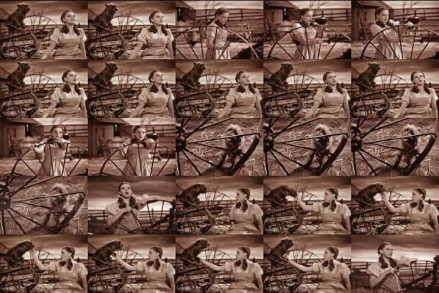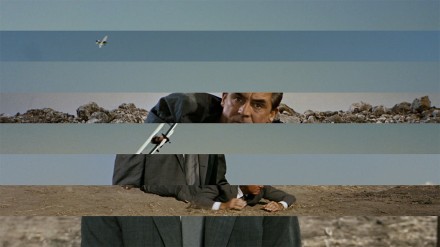
The Computational Sublime
Films
- Read More
 ExperimentalInstallation
ExperimentalInstallationLabyrinthine
Gregg Biermanncolor, sound, 15 minRental format: Digital file - Read More
 ExperimentalInstallation
ExperimentalInstallationUtopia Variations
Gregg Biermannblack and white, sound, 5 minRental format: Digital file - Read More
 AnimationExperimentalInstallation
AnimationExperimentalInstallationSpherical Coordinates
Gregg Biermannblack and white, sound, 5.03 minRental format: Digital file - Read More
 AnimationExperimentalInstallation
AnimationExperimentalInstallationCrop Duster Octet
Gregg BiermannDigital, color, sound, 5.3 minRental format: Digital file - Read More
 AnimationExperimentalInstallation
AnimationExperimentalInstallationMagic Mirror Maze
Gregg BiermannDigital, black and white, sound, 5 minRental format: Digital file
Description
Join us at the Ludlow House (139 Ludlow St.) on Wednesday, October 18th, 2017, at 7pm for a program of 10 films by Gregg Biermann.
**Free admission, RSVP required: filmmakerscoop@gmail.com.**
"In this work, Gregg Biermann has taken head-on some of the supreme moments of classical cinema and subjected them to a dazzling transformation in the digital domain. The results are exhilarating, surprising tours de force. They also have a zany quality that shows the artist to have a witty imagination. He is a prober into the hidden corners of cinema, and a master of computer-based wizardry.” -Larry Gottheim.
“As a whole, Gregg Biermann’s recent work suggests a sense of the overwhelming in a historical moment in which we are disoriented visually, sonically, socially, politically, and even biologically. It reflects and refracts the sense that, even as we attempt to make sense of the contemporary world, it continues to shift, becoming a foreign and unfamiliar territory. In Biermann’s work, as in contemporary life, our landmarks are constantly shifting, forcing us to find new ways of locating ourselves in a spatial and temporal situation that is ever slipping beyond our mind’s grasp.”
–Jaimie Baron, Barely Recognizable: The Horizons of the Digital Medium in the Work of Gregg Biermann.
PROGRAM:
Timeslices – HD video, 7 minutes, stereo, 2017 A sequence from 2001: A Space Odyssey is sliced into 40 vertical bars each moving at a slightly different rate while coalescing in the center of the piece for a single frame. the result allows for fascinating spatial-temporal distortions as the viewer experiences various instants in time simultaneously.
Labyrinthine – HD video, 8 minutes, stereo, 2010 “Here, the tidal relentlessness of endlessly advancing frames of appropriated images, jump cuts and fluid transformations lend the aural and visual qualities of a seascape to an urban landscape where space and time are distorted from linearity toward parallel infinities. Such a place, as a prison officer in Chicago once told me, is easier to get into than out of.”– Martin Rumsby "Photographic Memory: Diary of a Viewer", Millennium Film Journal 56
“In Labyrinthine (2010) Biermann takes forty-one shots of memorable and iconographic moments in Hitchcock’s classic Vertigo (1958). The shots are superimposed on top of each other creating a hypnotic labyrinth of repetitions and transformations. The different moments overlap in a kind of contra-punctual proliferation … Ultimately, a labyrinth of movements appears both within the image (the image within the image) and between the images (the changing relationship between the images within the image). Continuity editing is replaced by a discontinuous and labyrinthine editing, and the screen doesn’t show one image at a time, but several. … The images have a stuttering and discontinuous logic which arrests and focuses on perceptual phenomena which slips away when seeing the film. Biermann opens these intervals of the imperceptible and enlarges them and turns them into art form of its own. It is as if he uses the technologically enhanced object quality of the images to explore the optical unconscious by means not envisioned by Walter Benjamin.” --Eivind Røssaak, Algorithmic Culture, or the New Multiplicity of the Image, Between Stillness and Motion: Film, Photography, Algorithms (Amsterdam University Press, 2011)
Julie Andrews Sings A Round With Herself -- HD video,7 minutes, stereo, 2017 “Biermann takes an iconic scene from the 1965 Hollywood musical and reveals another take on the tenderness of this Rodgers and Hammerstein song, deconstructing it down to its smallest components, repeating its moments and reinscribing its music into something completely different.”– Veronica Paredes, Critical Commons
Utopia Variations – HD video, 5 minutes, sound, 2008 In this piece the “over the rainbow” sequence from The Wizard of Oz moves forward from the beginning and backwards from the end in half second intercuts. This gradually builds from one screen to a “25-voice” split-screen canon in which each voice is slightly out of sync. The resulting matrix is mesmerizing, kaleidoscopic.
Spherical Coordinates – HD video, 5 minutes, sound, 2005 “Spherical Coordinates remakes a short scene from Hitchcock's Psycho (1960). Here, we concentrate on Janet Leigh who is driving. The images twists, bends, folds and turns around (sometimes still, sometimes moving) as she steers the wheel. “The camera moves in a variety of ways, examining the inside of a 3D animated sphere on which a scene from Psycho is wrapped”, explains Biermann. It is as if the camera is analyzing the manipulation of the image itself” --Eivind Røssaak, Algorithmic Culture, or the New Multiplicity of the Image, Between Stillness and Motion: Film, Photography, Algorithms (Amsterdam University Press, 2011)
Crop Duster Octet – HD video, 5 minutes, stereo, 2011 “Hitchcock’s North by Northwest is deconstructed and reassembled to illuminate the patterns, rhythms and choreography of the original so as to break through and make for a eight banded kinetic tour de force. As the piece progresses the temporal displacement of each band gets closer and closer until they all unite into a remarkable grand finale.” --John Columbus, Black Maria Film Festival
Out There in the Dark – HD video, 4 minutes, stereo, 2016 Out There in the Dark is a digital age motion study inspired by the "chronophotographic" work of Etienne-Jules Marey. The finale from the Hollywood classic Sunset Boulevard is split into 16 superimposed layers. Each duplicate of the scene dissolves in and out such that it is slightly offset in time from the next. The result is oddly static and hyperactive at the same time
Magic Mirror Maze – HD video, 5 minutes, stereo, 2013 “Magic Mirror Maze favors the use of algorithmic functions in the service of highlighting the sensational uncanny already underpinning Welles’s famous Hall of Mirrors sequence. Magic Mirror Maze takes up a film sequence that already effectively distorts the comprehensible spatial and temporal parameters of classical editing and splinters these even further. … Biermann’s piece only magnifies the potential for aesthetic exuberance present in Welles’s film. Furthermore, it converts the noir assignation of moral blame to the woman into a free-floating affective eeriness evenly distributed amongst all bodies, images and sounds rather than simply organized along gender polarities.” – Elena Del Rio, Folding Film into Media: Aesthetics and Micropolitics of Digital Remix Cinema in Gregg Biermann’s Magic Mirror Maze
Iterations – HD video, 5 minutes, stereo, 2014 "In Iterations (2014), a sequence from Hitchcock’s Rear Window (1954) is sliced into nineteen columns, each moving at a slightly different speed, getting progressively faster from left to right. Only at one instant do all nineteen columns briefly align. This film invites us to experience different instants of the scene simultaneously, invoking our desire for time to cohere into a single instant but only briefly allowing for this satisfaction." — Jaimie Baron, Festival of (In)Appropriation
Scenes from the Anthropocene – HD video, 14 minutes, stereo, 2017 Scenes from the Anthropocene combines material shot at The Bronx Zoo and The Museum of Natural History, with 3D animated material. On the soundtrack, paleontologist Peter Ward warns of the probability that we are experiencing the beginning of a sixth mass extinction. This work is a lament on anthropogenic climate change, its effects on life on Earth and the human urge to oblivion.